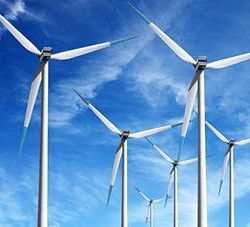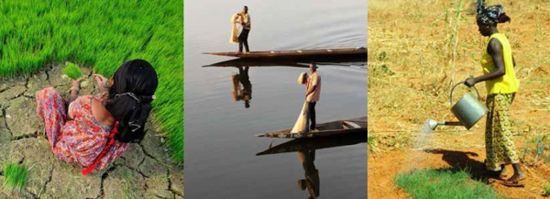 Lima, Peru – Even if global greenhouse gas emissions are cut to the level required to keep global temperature rise below 2°C this century, the cost of adapting to climate change in developing countries is likely to reach two to three times the previous estimates of $70-100 billion per year by 2050, according to a new United Nations Environment Programme (UNEP) report.
Lima, Peru – Even if global greenhouse gas emissions are cut to the level required to keep global temperature rise below 2°C this century, the cost of adapting to climate change in developing countries is likely to reach two to three times the previous estimates of $70-100 billion per year by 2050, according to a new United Nations Environment Programme (UNEP) report.
Released during a crucial round of climate talks in Lima, Peru, the first UNEP Adaptation Gap Report serves as a preliminary assessment of global adaptation gaps in finance, technology and knowledge, and lays out a framework for future work on better defining and bridging these gaps.
The report finds that, despite adaptation funding by public sources reaching $23-26 billion in 2012-2013, there will be a significant funding gap after 2020 unless new and additional finance for adaptation is made available.
Without further action on cutting greenhouse gas emissions, as outlined in UNEP’s Emissions Gap Report 2014, the cost of adaptation will soar even further as wider and more-expensive action is needed to protect communities from the intensifying impacts of climate change such as drought, floods and rising sea levels.
“As world leaders meet in Lima to take the critical next step in realizing a global agreement on climate change, this report underlines the importance of including comprehensive adaptation plans in the agreement,” said Achim Steiner, Executive Director of UNEP and Under-Secretary-General of the United Nations.
“The impacts of climate change are already beginning to be factored into the budgets of national and local authorities. The escalating cost implications on communities, cities, business, taxpayers and national budgets merit closer attention as they translate into real economic consequences,” he added.
“National authorities and the international community should take the necessary steps to ensure the funding, technology and knowledge gaps are addressed in future planning and budgeting,” he said. “Of particular concern are the implications on least developed countries, whose financial resources for investing in development will need to be redeployed to financing adaptation measures.”
“The report provides a powerful reminder that the potential cost of inaction carries a real price tag. Debating the economics of our response to climate change must become more honest,” he added. “We owe it to ourselves but also to the next generation, as it is they who will have to foot the bill.”
The Intergovernmental Panel on Climate Change‘s Fifth Assessment Report included estimates on the cost of adapting to climate change in developing countries of $70-100 billion per year by 2050 based largely on World Bank figures from 2010.
The Adaptation Gap Report 2014, produced in collaboration with 19 leading institutions and research centres, expands upon these earlier estimates by including new national and sector studies in its analyses and modelling. The report finds that the earlier figures are likely to be a significant underestimate. For example, one newer study found that the annual average adaptation costs for South Asia alone were estimated at up to $40 billion.
While the Adaptation Gap Report 2014 finds that the likely increase in adaptation costs with emissions reductions in place is two to three times higher, it points to the possibility of even greater expense. Extending the analysis to all developing countries indicates a chance that adaptation costs could climb as high as $150 billion by 2025/2030 and $250-500 billion per year by 2050.
These costs are based on the assumption that further wide-ranging action is taken to cut emissions to the level required to meet the target of limiting global temperature rise this century to 2°C compared to pre-industrial levels.
UNEP’s Emissions Gap Report 2014, released in early November, found that in order to limit global temperature rise to 2°C and head off the worst impacts of climate change, global carbon neutrality should be attained by mid-to-late century.
However, in a business-as-usual scenario, global greenhouse gas emissions could rise to up to 87 Gt CO2e by 2050, far beyond the safe limits, and bring an increased need for spending to adapt to the consequences of a rapidly warming world. Under this scenario, adaptation costs could hit double the worst-case figures.
UNEP’s Africa Adaptation Gap Report, released prior to the Warsaw Climate Conference in 2013, found that adaptation costs for Africa alone could reach approximately $350 billion annually by 2070 should the 2°C target be significantly exceeded, compared to $150 billion lower per year if the target were met.















